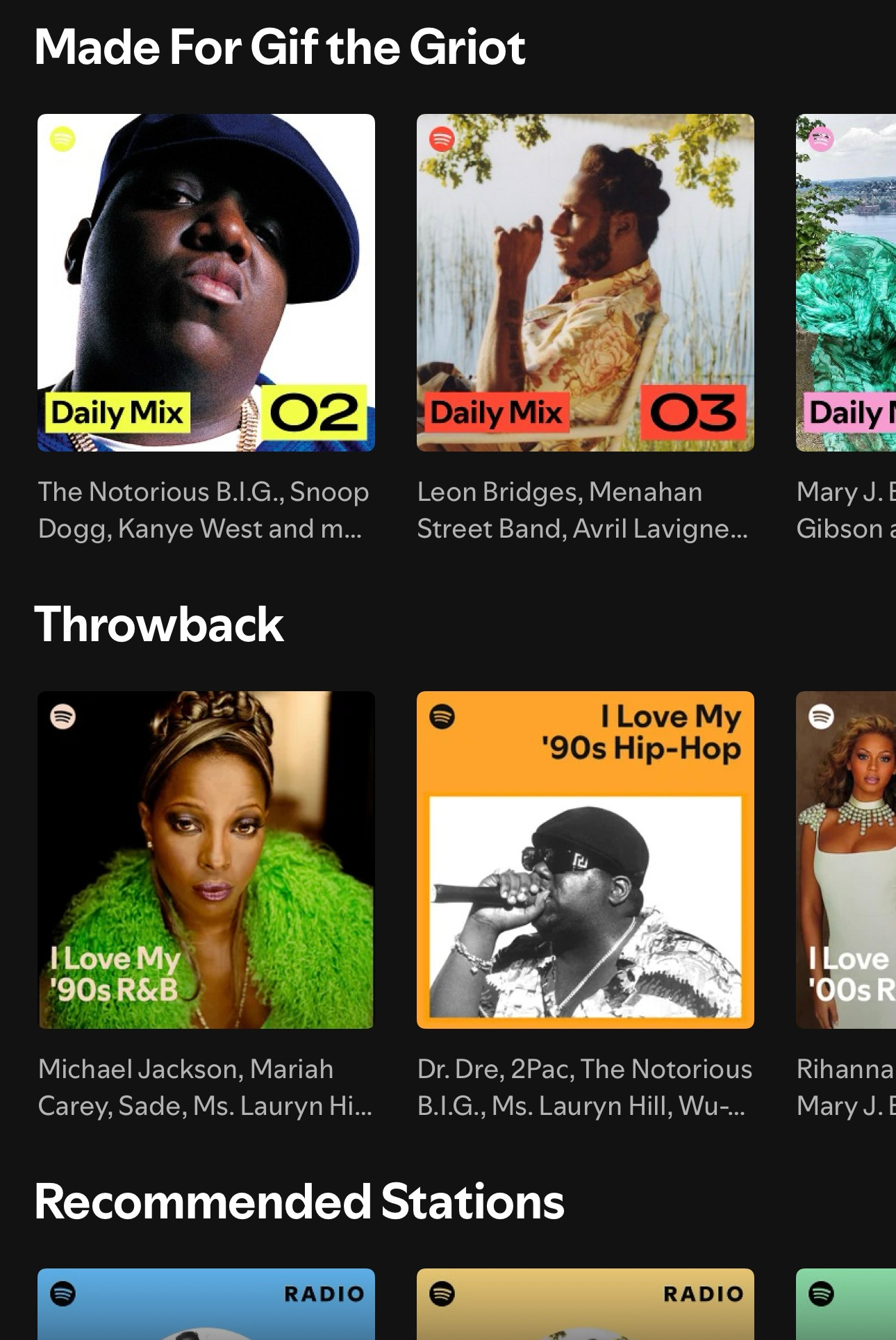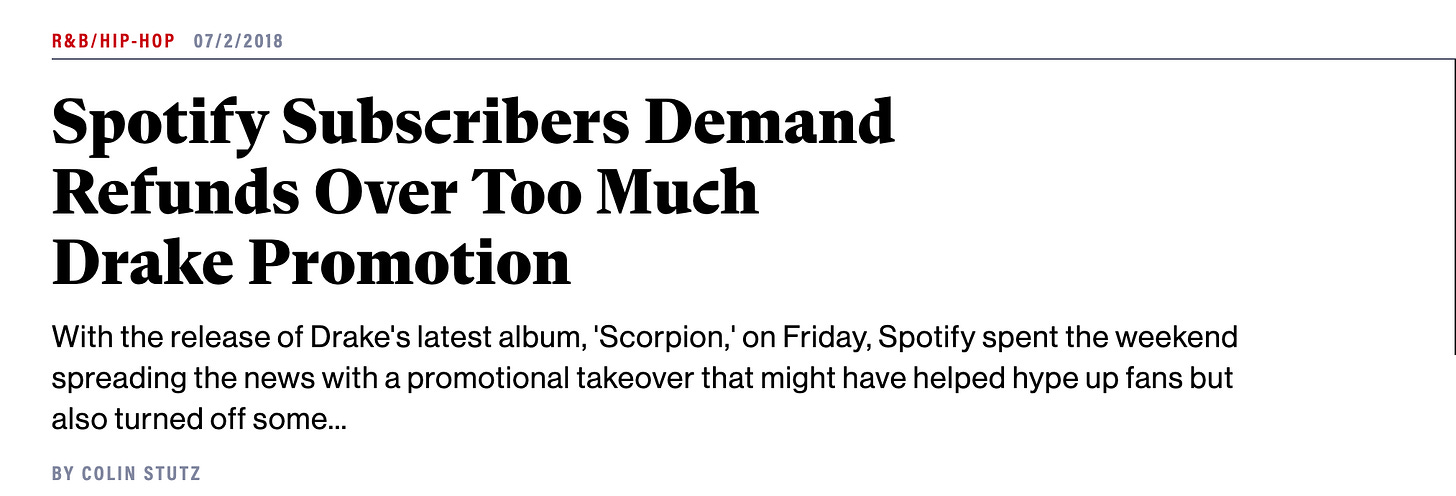40,000 Monthly Streams On Spotify Should Be Easy—Here’s Why It’s Not
1K Listeners & 40K Streams
Every artist with good music should be able to average at least 40,000 streams a month on Spotify. Why doesn’t that often happen?
The Streaming Habit
Let’s start with a story.
Meet Lisa. Every morning, Lisa wakes up and needs to get going, so she puts on a playlist of her favorite songs. This playlist plays while she showers, does her hair, puts on her makeup, gets dressed, and heads to her car to drive to work. While she’s driving, she plays another playlist of her favorite songs. When she arrives at work, she listens to music again. On her drive home, she streams yet another playlist.
Later, when she picks her daughter up from school or drops her off, she streams her playlist again. That’s Lisa’s daily routine: morning prep, drive to work, work, drive home, and school runs. This gives at least six opportunities for an artist’s songs to generate streams.
To reach 40,000 streams per month, an artist would only need to capture two of those sessions per day—Lisa’s drives to and from work. That’s two streams per day, five days a week, adding up to 40,000 streams per month.
Why That Doesn’t Happen
The reason most artists don’t achieve this lies in their lack of control over their audience.
Social media serves content from the accounts users follow. When you open Instagram or TikTok, your feed is filled with posts from the people you follow. However, Spotify works differently.
Spotify delivers content based on editorial selections and algorithmic recommendations, which are heavily dictated by popularity and listening activity. Unlike social media, Spotify does not have a central feed where users see new music from the artists they follow. Major record companies would never allow such a thing because it would limit the exposure of their artists. My music tab on Spotify would look much different than it does now if the focus was on music from artists I followed.
Spotify is set up for major record companies to force-feed their music to its users through featured placement and playlists.
The Feedback Loop and Algorithmic Playlists
The more a user streams a song, the more the song will be served up and prioritized by Spotify’s system, creating a Feedback loop.
Take The Nororious B.I.G, for example. I Love My 90’s Hip Hop will feature B.I.G songs, I Love My 90’s R&B will feature B.I.G songs, and my Daily Mix, because I stream 90’s Hip Hop heavily, will feature B.I.G songs. Anytime I stream any of those playlists, it will send a signal to Spotify that reinforces my interest in B.I.G, resulting in his music being prioritized in my playlists and recommendations.
I don’t have to add any B.I.G songs to my library for this to happen. I don’t need to search and stream any of his music on demand. This will happen if I stream music from the Wu-Tang Clan, it will happen if I stream music from Nas, and it will happen if I stream music from Jay Z. Whatever music Spotify’s system thinks I want to hear most will be heavily influenced by what the platform chooses to serve me most.
In 2018, Spotify famously put Drake’s face on the cover of nearly all its playlists, even if the playlists didn’t feature any of his music.
Additionally, Spotify lacks a “dislike” button. Users cannot opt out of hearing specific artists. The most they can do is hide individual songs from particular playlists—a tedious process most won’t bother with. If a song plays for at least 30 seconds before the user skips it, Spotify still considers it an engaged stream, reinforcing its recommendation.
For an artist’s music to be recommended algorithmically and prioritized, a listener must stream it heavily enough to compete with other songs. That’s a tall order when the other songs are actively pushed on listeners through featured placements and editorial and algorithmic playlists.
As an indie artist, the cycle likely works like this: a user discovers your song on social media. They like it and save it to their library. That’s where it ends. The user expects to get your music when they stream a playlist of their favorite songs.
Spotify’s feedback loop prioritizes the songs they stream most often. The songs the user streams most often are likely to be the songs that dominate the playlists they’re served. When a user fires up a playlist, those songs are prioritized in the first hour of listening.
The music from major artists will be force-fed to users through editorial and algorithmic playlists, but the music from indie artists won’t be. The only way to get enough streams to be prioritized on playlists as an indie artist is to get them on demand.
Free-Tier Limitations
Most Spotify users are on the free tier, meaning they cannot choose what they listen to. They can only stream playlists, which means their listening habits are dictated by whatever songs Spotify serves up. Since free-tier users generate a significant portion of Spotify’s streams, the songs they hear most frequently—those prioritized on algorithmic playlists—become the platform’s most popular tracks.
Free tier limitations and the Feedback loop all but shut indie artists out of rotations. The only sure way to break in is through high-level demand or Spotify’s internal advertising.
Spotify’s Paid Artist Tools
Spotify offers artists three ways to connect with users and break into their rotations—all of which require payment:
Marquee – A paid advertising tool that promotes new releases to both free and paid users.
Showcase – Another paid promotion tool that allows artists to advertise any release, new or old.
Discovery Mode – Feature where artists sacrifice 30% of their royalties for increased visibility on algorithmic playlists like Artist Radio and Daily Mixes.
The Catch with Discovery Mode
Discovery Mode doesn’t involve direct payments. It takes a 30% cut from streams generated through Spotify’s algorithmic placements. Discovery Mode works by consolidating streaming activity from playlists like Daily Mixes and Artist Radio, focusing engagement on selected tracks.
If an artist has 100 streams spread across three songs, Discovery Mode consolidates those streams to one song, increasing the frequency at which it’s played. The idea is to trick Spotify’s algorithm into thinking users prefer that track, triggering more recommendations.
If a user then saves the song to their library or a playlist and plays that playlist often, the song gains further traction, increasing its likelihood of appearing in algorithmic recommendations. However, this comes at the cost of 30% of the revenue generated from those streams.
The Problem with Long-Term Growth
A major issue with Discovery Mode is sustainability. Once an artist exits the program, their streams may drop back to pre-Discovery Mode levels. If other artists remain in Discovery Mode, their music is prioritized, pushing out artists who opt out.
Since Discovery Mode forces artists to continually sacrifice 30% of their revenue to maintain visibility, it creates a cycle where artists must either keep participating or risk losing traction. The only way to offset the revenue loss is by driving enough streams from users’ personal libraries and playlists—but that depends entirely on whether listeners are manually saving and playing the music.
If an artist’s audience primarily streams via algorithmic playlists rather than on-demand, they remain stuck in the Discovery Mode cycle.
The Most Effective Strategies
To re-engage Spotify listeners and sustain growth, artists need to focus on paid tools like Marquee and Showcase rather than Discovery Mode. Both Marquee and Showcase allow artists to reengage current listeners. You’d use Marquee to introduce new releases and grow your catalog in user libraries, and you’d use Showcase to drive users deeper into your catalog or reintroduce a song that may have fallen out of their rotation.
These ad options restrict you to the release cover art, don’t include audio, and don’t allow you to link off-platform. You can reengage your audience, but you can’t extract them. Upon the campaign's end, this can lead to a regression back to pre-campaign numbers, with no way to dictate a different outcome.
The ads are highly effective because Spotify has the listener data to know exactly who to target. For example, a campaign we ran cost around $0.40 per listener acquired in the US. Breaking even would take approximately 133 streams per year per listener. That’s not bad; however, long-term success depends on factors beyond our control—specifically, Spotify’s algorithm and the listener’s continued use of the platform. If those listeners aren’t converted into engaged fans, we will have to keep paying to re-engage them, keeping us in a never-ending cycle of ad spending.
If Spotify deprioritizes an artist’s music or if a listener stops using Spotify altogether, the connection is lost.
The Social Media Factor
To regain control over their audience, artists often turn to social media. However, there’s a major disconnect between social media followers and active Spotify listeners.
The people who follow an artist on Instagram or TikTok may not be the same ones streaming their music. Even if some followers do stream, their social media activity may be inconsistent. If they only log in occasionally, they might miss the artist’s posts entirely. Social media algorithms also prioritize content based on engagement, meaning an artist’s posts could be deprioritized if followers engage with other content more frequently.
The Flawed Strategy of Pre-Saves
Many artists try to bridge the gap using Pre-Save campaigns, encouraging fans to save songs before release. However, just because someone saves a track doesn’t mean they’re an active Spotify listener.
For example, a user might have a Spotify account but rarely use it due to ads, limitations of the free tier, or a general lack of interest in music streaming. While they may have saved the artist’s song, they aren’t necessarily generating streams. All a Save indicates is that the user has a Spotify account.
Since social media doesn’t provide insight into a fan’s streaming habits, artists often end up with inflated Pre-save numbers that don’t translate to actual streams. As a result, Pre-saves aren’t an effective tool to reengage listeners and drive the repeat activity it would take to earn 40K streams.
Conclusion
Ultimately, Spotify controls access to listeners. Artists can only reach their audience through paid promotions or by relying on unpredictable algorithmic placements. Unlike social media, there’s no direct line between artists and fans—just a cycle of discovery, engagement, and loss dictated by Spotify’s systems.
For artists looking to build sustainable careers, the key isn’t just gaining streams—it’s finding ways to maintain long-term listener engagement while minimizing reliance on Spotify’s paid tools.





